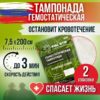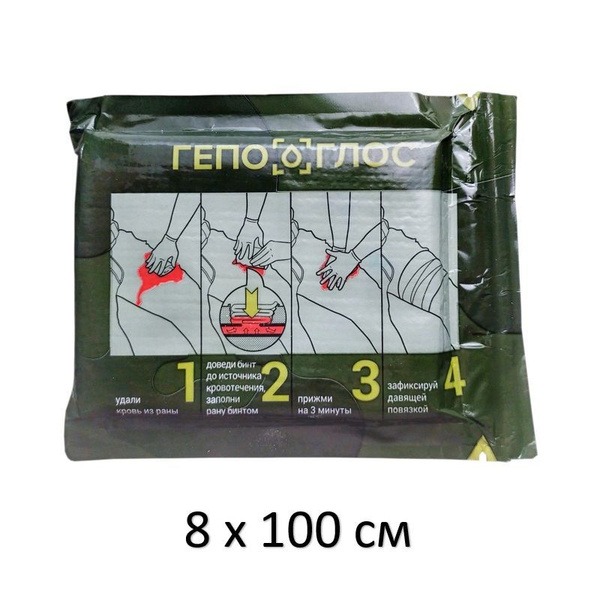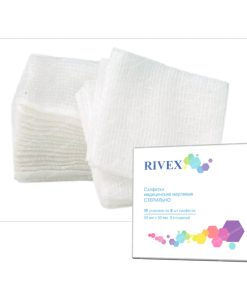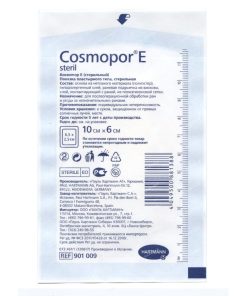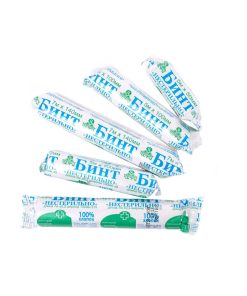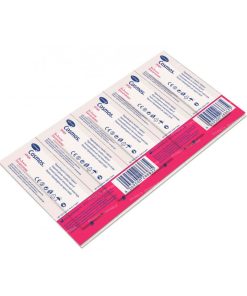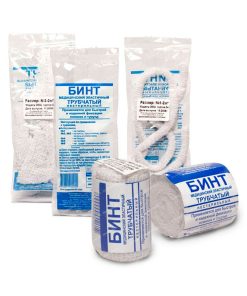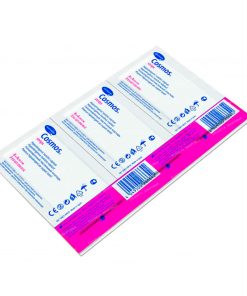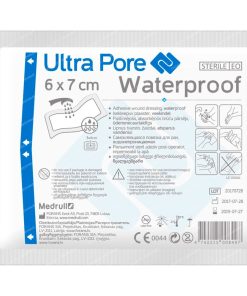Hemostatic Chitosan Dressing (8x100cm), Sterile
$69.00
Title: Gepogloss Hemostatic Bandage: 8x100cm Chitosan-Based Sterile Dressing
Description:
Gepogloss is a sterile hemostatic bandage (8cm x 100cm) utilizing a chitosan-based active ingredient for rapid and effective bleeding control. This chitosan-based dressing, applied to both sides of a non-woven viscose/polyester (spanlace) bandage, features added carboxymethyl starch to enhance its absorbency. Gepogloss is designed to stop external bleeding of varying intensity, including arterial bleeding, and is particularly effective in pre-hospital and field settings. It’s increasingly becoming a staple in military and individual first-aid kits, alongside tourniquets.
Mechanism of Action:
Gepogloss’s hemostatic properties stem from the electrostatic interaction between the positively charged acylated chitosan particles and negatively charged red blood cells. This interaction promotes the formation of a gel-like clot, effectively sealing the bleeding wound.
Key Features & Benefits:
- Rapid Hemostasis: Quickly stops bleeding through electrostatic interaction.
- Bacteriostatic: Inhibits bacterial growth.
- Non-Heat Generating: Prevents thermal injury to the wound.
- No Impact on Coagulation: Does not interfere with the body’s natural clotting process.
- Hypoallergenic: Minimizes the risk of allergic reactions (individual intolerance may occur).
- Clinically Proven: Efficacy and safety confirmed through clinical trials and real-world use.
- High Chitosan Content: Approximately 9mg/cm² of chitosan ensures effective wound coverage and interaction with blood.
- Rigorously Tested: Each batch undergoes comprehensive quality control, including testing for absorbency, wettability, pH, moisture content, density, tensile strength, and more.
- 5-Year Shelf Life: Ensures long-term readiness for emergency situations.
- Russian-Made & Registered: Registered medical device in the Russian Federation (Registration Certificate No. РЗН 2017/5945, issued July 10, 2017, by Roszdravnadzor).
Application Instructions:
- Expose the Wound: Ensure clear visibility and accessibility. Adjust clothing or body position as needed.
- Clean the Wound: Remove any visible blood clots, but do *not* remove embedded foreign objects.
- Identify Bleeding Source: Locate the bleeding point by palpating for pulsation or other indications.
- Apply Gepogloss: Firmly pack the bandage into the wound, applying pressure directly to the bleeding source for 3 minutes.
- Assess Bleeding: If bleeding persists after 3 minutes, apply a second Gepogloss bandage and repeat the process.
- Secure the Bandage: Once bleeding stops (after 3-5 minutes), secure the bandage firmly but gently. Do not move the bandage.
- Transport: After 15-20 minutes, transport the patient, leaving the Gepogloss bandage in place.
- Bandage Removal: Remove the bandage after at least 20 minutes, but no later than 24 hours after bleeding has stopped.
Storage:
Store in a dry place at temperatures between -25°C and 40°C.
Important Note:
While Gepogloss is a highly effective hemostatic aid, proper first-aid training is crucial for its correct and safe application. Consult with a healthcare professional for any questions or concerns.
Related products
Bandages & Dressings
Bandage Medrull Ultra Pore self-adhesive waterproof sterile No. 1 size 6x7cm
 Free worldwide shipping on orders $99+
Free worldwide shipping on orders $99+  US: temporary delays — postal services aligning new import rules,
US: temporary delays — postal services aligning new import rules,  EU: 1–2 weeks,
EU: 1–2 weeks,  Worldwide: 1–4 weeks
Worldwide: 1–4 weeks 

